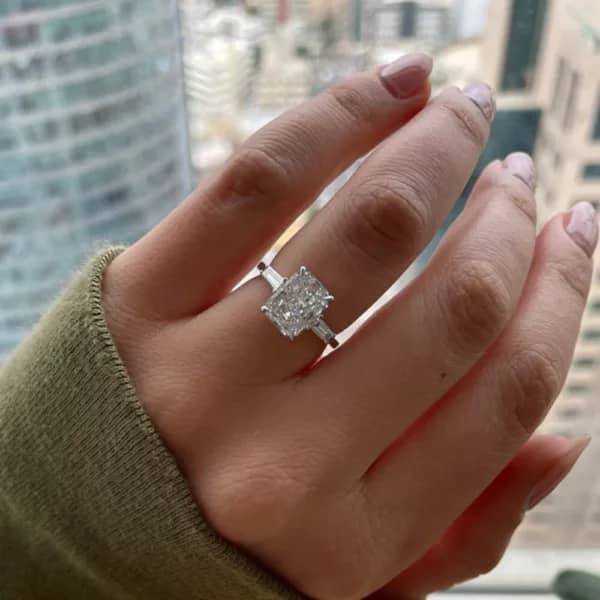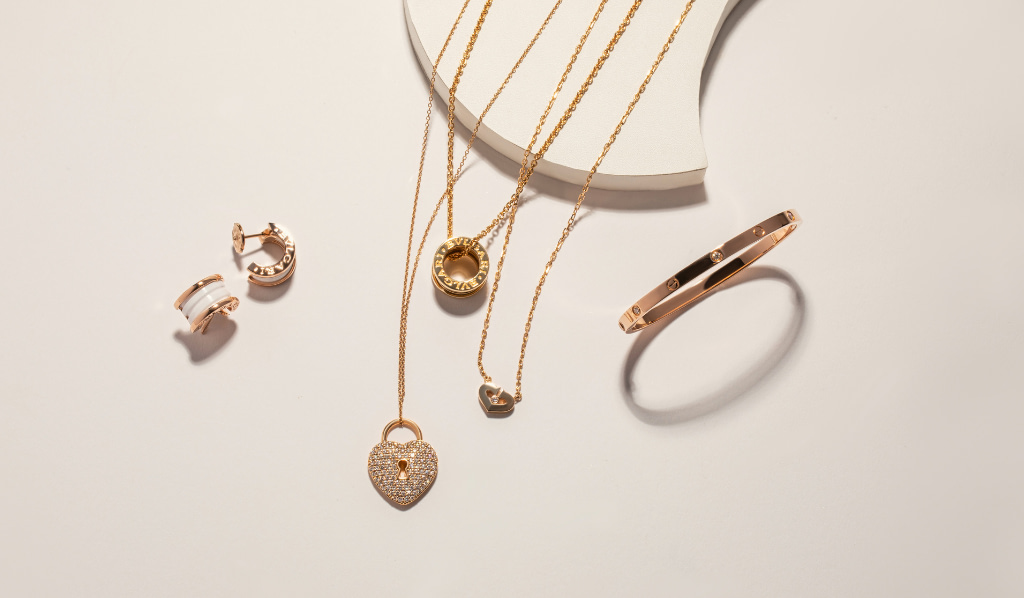Are you wondering what jewelry metals are available to you? Are you looking for the best metal for your jewelry needs? This article will provide you with a guide to jewelry metals, including gold, silver, and platinum. We will discuss the different properties of each metal to help you identify the best metal for your jewelry.
1. Gold Jewelry
Gold is a precious metal that has been used to craft jewelry for centuries. It is a soft metal, so it is often alloyed with other metals to make it stronger. Gold is available in different colors, such as yellow, rose, and white. Gold jewelry is often stamped with a karat rating, which indicates the percentage of gold in the piece. Pure gold is 24 karats, so a piece marked 14k is 14 parts gold and 10 parts alloy.
Gold jewelry usually has a coating to protect it from tarnishing. This coating can be a thin layer of gold, a type of lacquer, or an alloy. The coating helps keep the gold looking shiny and new for longer.
Gold jewelry is a popular choice for special occasions, such as weddings and anniversaries. It can also be worn for everyday wear. Gold jewelry comes in a variety of styles, from classic to modern. It is a versatile metal that can be dressed up or down, depending on the occasion.
Gold jewelry can be expensive, but there are some affordable options available. Gold-plated jewelry is a budget-friendly option that has a layer of gold over a base metal, such as brass or silver. Gold-filled jewelry is another cost-effective option that has a thicker layer of gold over a base metal.
When shopping for gold jewelry, it is important to look for pieces that are made with high-quality materials. Look for pieces that are stamped with a karat rating and have a manufacturer’s
2. Silver Jewelry
Silver jewelry is one of the most popular and versatile jewelry metals. It is an affordable option and can be used to create a wide range of styles. Silver is a soft metal, so it is often alloyed with other metals such as copper to increase its durability. Silver jewelry is often plated with a thin layer of rhodium to give it a bright, white finish. Silver jewelry can be found in a variety of forms, including rings, earrings, necklaces, bracelets, and brooches.
When it comes to caring for silver jewelry, it is important to keep it clean and free from tarnish. Silver jewelry can be cleaned with a soft cloth and warm soapy water. It is also important to store silver jewelry away from moisture and humidity to help prevent tarnishing. Tarnish can be removed using a silver-cleaning cloth or silver polish.
When shopping for silver jewelry, it is important to look for pieces that are marked with a purity mark. This mark indicates the percentage of silver in the jewelry and helps to ensure that you are buying genuine silver.
When considering a silver jewelry purchase, it is important to consider the quality of the piece. Silver jewelry is available in a variety of grades, from sterling silver to fine silver. Sterling silver is the most popular grade and is composed of 92.5% silver and 7.5% other metals. Fine silver is 99.9% silver and is the highest quality silver available.
3. Platinum Jewelry
Platinum is a precious metal that is often used to create jewelry. It is one of the rarest metals on Earth, and is more expensive than gold or silver. Platinum is also more durable and does not tarnish or corrode over time.
When compared to gold, platinum is denser, heavier, and whiter in colour. It is also hypoallergenic, making it a popular choice for those with sensitive skin. Platinum is often used to make engagement and wedding rings, as well as other pieces of jewelry such as necklaces and earrings.
When shopping for platinum jewelry, it is important to look for pieces that have been certified by a reputable source. The certification should come with a stamp or engraving that indicates the purity of the metal. The most common stamp is ‘PT950’, which indicates that the jewelry is 95% pure platinum. The higher the purity, the more valuable the piece.
When caring for platinum jewelry, it should be cleaned regularly with a soft cloth and stored away from other jewelry. It is also important to avoid exposing the metal to chemicals and harsh detergents.
If you are looking for a luxurious and timeless piece of jewelry, platinum is an excellent choice. With proper care, it can last a lifetime and become a cherished heirloom.

4. Other Precious Metals
In addition to gold, silver, and platinum, there are other precious metals used in jewelry. The most common are palladium, titanium, and tungsten.
Palladium is a member of the platinum family, and it is often alloyed with gold to create a white gold alloy. Palladium is becoming increasingly popular as an alternative to platinum due to its affordability. It is also hypoallergenic, making it a good choice for those with sensitive skin.
Titanium is a lightweight metal with a silver-gray color. It is hypoallergenic and very durable, making it a great choice for everyday jewelry.
Tungsten is a very hard metal with a silver-gray color. It is an excellent choice for men’s wedding bands as it is very scratch-resistant.
In addition to these metals, there are also other precious metals that are used in jewelry such as cobalt, stainless steel, and zirconium. These metals are less expensive than gold, silver, or platinum and can be used to create unique and beautiful pieces of jewelry.
When selecting jewelry, it is important to consider the type of metal you are purchasing. Each metal has its own unique characteristics and will affect the look and feel of the piece. Be sure to do your research and select a metal that will look great and last for years to come.
5. Jewelry Care Tips
Jewelry care is important for keeping your jewelry looking its best. Here are some tips to help you look after your jewelry:
- Store jewelry separately – Jewelry can become scratched or damaged when stored together. Use a soft cloth or pouch for each piece of jewelry to keep it safe.
- Clean jewelry regularly – Clean your jewelry regularly with a soft cloth and warm, soapy water. Use a soft toothbrush to reach tight spots. Find out more about cleaning jewelry here.
- Remove jewelry before swimming – Chlorine in swimming pools can damage jewelry, so remove it before swimming. Find out more about swimming with jewelry here.
- Avoid contact with lotions and perfumes – Lotions and perfumes contain chemicals which can damage jewelry. Put on your jewelry after applying lotions and perfumes.
- Bring jewelry to a professional – If jewelry needs repairs or cleaning, take it to a professional.
6. Jewelry Trends
Jewelry trends are constantly changing, but some styles have stood the test of time. Classic pieces such as pearl earrings and diamond necklaces remain popular, but there are also new trends emerging in the world of jewelry.
- Layered Necklaces: Layering delicate necklaces of different lengths and styles is a popular trend. This look adds dimension and interest to any outfit.
- Statement Earrings: Bold earrings that make a statement are a popular trend. Large hoops, tassel earrings, and geometric shapes are all popular styles.
- Stackable Rings: Wearing multiple rings on one finger or across multiple fingers is a popular trend. This look can be achieved with thin, delicate bands or chunky, statement rings.
- Personalized Jewelry: Jewelry that is customized with initials, names, or birthstones is a popular trend. This type of jewelry makes a thoughtful gift and adds a personal touch to any outfit.
Adding an image or chart that showcases these trends would enhance the content and give readers a visual representation of the styles. A great resource for jewelry trends is the Vogue Jewelry Shows, where designers showcase their latest collections.

Conclusion:
Jewelry metals play a pivotal role in determining the aesthetics, durability, and value of a piece. Gold, available in various colors and karats, remains a timeless choice for its beauty and durability. Silver offers affordability and versatility but requires regular maintenance due to its propensity to tarnish. Platinum stands out for its luxurious appearance, strength, and hypoallergenic properties, making it a top choice for engagement rings. Titanium is lauded for its lightweight nature combined with strength, while tungsten is gaining popularity for its durability and scratch resistance. When selecting a metal, one should consider factors like personal style, budget, and the occasion to ensure the chosen metal aligns with their preferences.
